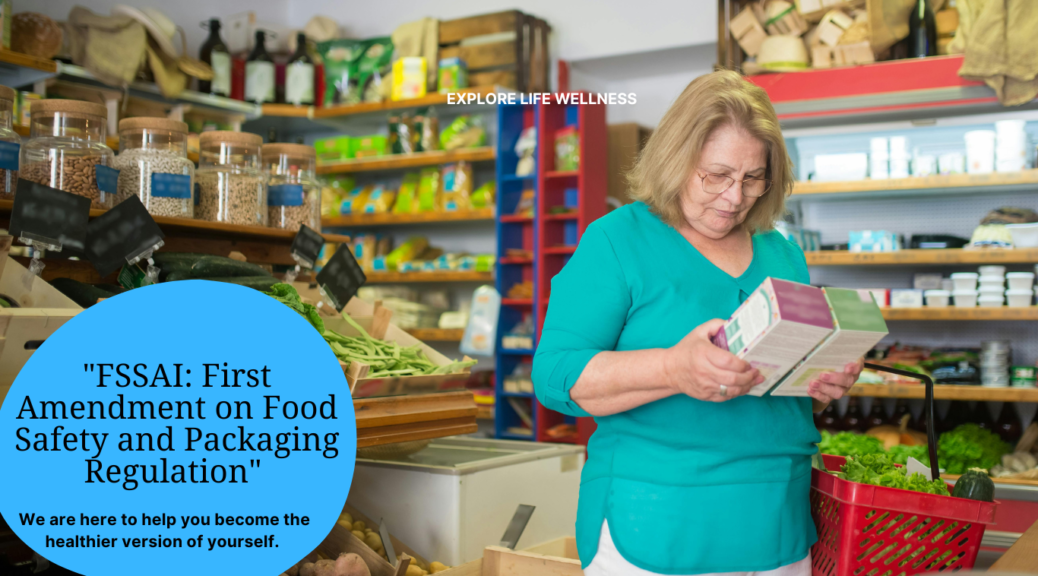
FSSAI: First Amendment on Food Safety and Packaging Regulation
Introduction
Ever paused mid-meal to think “What’s actually in the packaging holding my food?” If you have, you’re not alone and you’re actually ahead of the curve. The Food Safety and Standards Authority of India (FSSAI) has just issued its First Amendment to the Food Safety & Standard (Packaging) Regulation a move that has massive implications for our health, wellness, and the environment. Let’s unpack what this means, why it matters, and how it impacts your well-being.
A Snapshot of FSSAI and Its Mission
What is FSSAI?
- The Food Safety and Standards Authority of India (FSSAI)[1] is a statutory body under the Ministry of Health & Family Welfare, set up via the Food Safety and Standards Act, 2006 Wikipedia.
- It oversees food safety across the entire chain: from manufacturing to packaging, storage, transport, and sale.
Why Packaging Matters for Your Health
Poor-quality packaging can expose food to harmful chemicals or microbes, affecting nutrition and health. Packaging isn’t just a container it’s the shield that ensures your food stays clean, hygienic, and free of contaminants.
The First Amendment: Key Highlights & Health Impacts
FSSAI released the Food Safety & Standard (Packaging) First Amendment Regulations, 2025, with significant updates that take effect on March 28, 2025
1. Green Packaging: Embracing Recycled PET (rPET)
- The amendment now permits the use of recycled polyethylene terephthalate (rPET) for food packaging if it meets FSSAI’s safety and quality norms.
- This aligns with global sustainable goals boosting environmental welfare while upholding food safety.
Health Advantage: Properly tested rPET ensures no harmful chemical migration into food safeguarding nutrition integrity.
2. Continued Emphasis on Safety with Migration Limits
- All food-contact materials must meet strict specific migration limits to ensure chemicals don’t leach into food—a critical protection for your well-being.
3. Ensuring Transparency and Accountability
- Packaging now must be traceable, and clearly indicate whether recycled materials were used.
- This strengthens consumer trust and gives you more visibility into your food’s journey.
Beyond Packaging: Complementary Revisions to Food Product Standards
FSSAI also released a Food Products Standards & Additives First Amendment, 2025 effective February 1, 2026.
Key Updates
- Edible Oils: Revised purity standards via refined refractive index values for palm oil, palmolein, and vanaspati ensure adulteration is curbed.
- Meat Sausages: Stricter standards for fresh, cooked, smoked, and dry sausages cover meat content, moisture levels, and hygiene protocols.
- Dehydrated Tarragon: Now must meet precise moisture, volatile oil, and contaminant thresholds.
- Packaged Drinking Water: Parameters like pH and physical properties have been updated for enhanced safety.
- Food Colors: Streamlined standards remove redundant safety footnotes to reflect updated scientific evaluations
How These Changes Benefit Your Health & Nutrition
The survey also revealed concerning statistics about the prevalence of non-communicable diseases among children:
- Cleaner Food and Packaging: With stricter packaging norms and migration limits, contaminants are less likely to enter your food aligning with responsible wellness habits.
- Better Quality Oils: Adulteration-free edible oils maintain their nutritional profile, protecting your heart and overall health.
- Safer Processed Meat: Defined sausage standards reduce exposure to harmful additives or unsafe processing methods supporting your well-being.
- Reliable Water Safety: Ensuring clean and well-packaged drinking water is essential for hydration and health.
- Transparent Food Colors: Updated standards prevent unnecessary exposure to unsafe dyes, enhancing food safety awareness.
Practical Tips: How You Can Embrace These Changes
There are multiple ways to improve our nutritional health. We emphasizes the importance of proactive testing and dietary adjustments to ensure children receive the necessary nutrients. Some of the possible ways includes:
- Look for rPET Labels: When shopping, check for packaging indicating recycled PET (rPET). This means it meets FSSAI’s safety and sustainability standards.
- Choose Trusted Brands: Choose the brands known for transparent packaging, especially in edible oils and meat products.
- Support Sustainable Packaging: Favor products packaged with recyclable materials or minimal plastic it’s better for your health and the planet.
- Stay Informed: Keep an eye on updates via FSSAI’s official site or other credible sources to make thoughtful food choices.
- Advocate for Label Transparency: Ask brands for clarity on packaging materials and processing standards it pushes the industry toward better health and safety practices.
Conclusion
FSSAI: First Amendment on Food Safety and Packaging Regulation is more than an environmental milestone it’s a win for your health. By combining food safety with sustainable packaging, these standards help ensure that what touches your food doesn’t compromise your nutrition or well-being.
This isn’t just regulatory change it’s a step toward a healthier, more transparent food system. Let’s celebrate it, practice informed shopping, and support packaging that protects both us and the planet.
Sources
- Food Safety and Standards Authority of India – Wikipedia
- 689d8d163d422coffee chicory_gazette.pdf
- 6879d8af12522Palm Oil_FPSFA_Notification.pdf
- 685a81f260140Food Safety and Standards_Alcoholic Beverages_First Amendment Regulations 2025.pdf
Read More about : FSSAI Announces Revised Guidelines for Labeling Compliance